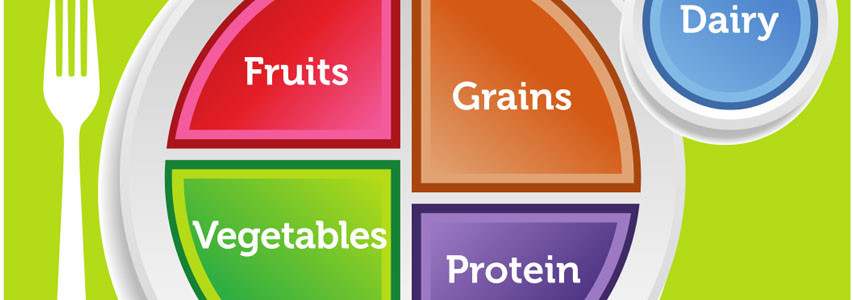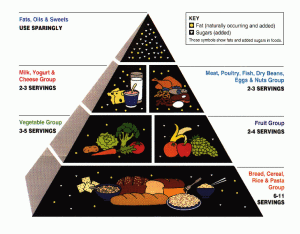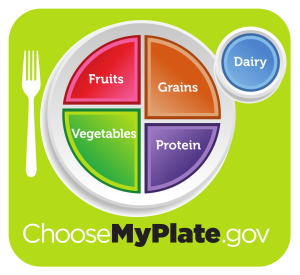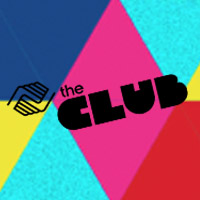

Photo courtesy of the United States Department of Agriculture

Photo courtesy of the United States Department of Agriculture
You’ve probably heard people talk about it or seen it on a poster at school and throughout the grocery store. Pictures of pasta, fruit, and cheese, to name a few. It’s the food pyramid. But do you know what this little triangle of eats actually means? Did you know it was officially replaced in 2005, and now there’s a cool new plate to help you make good food choices? Read about them below to find out what’s behind the food guide and why it should matter to you.
Way back in 1992, the United States Department of Agriculture- a group of people who are in charge of food and how it makes its way to your plate- came up with a nifty way for kids and adults to keep track of what and how much they should be eating. This tool was called the food pyramid. Maybe you’ve seen pictures of the triangle, which is divided up into sections of dairy, meat, fruit, vegetable, grain, and some other stuff you’re not supposed to eat in big amounts. In 2005, the picture of the pyramid was replaced by a plate of food. There aren’t too many differences, but it’s really important to understand what it means so you can try to stay healthy when eating. Here’s the deal.
Take a look at “MyPlate” at www.choosemyplate.gov, and you’ll see it’s divided into sections: fruits, grains, vegetables, proteins, and dairy. It’s a lot like the old pyramid, except it only shows how you would divide your plate up with these types of foods throughout the day instead of specific pictures of foods and numbers of servings. If you visit the web site and click on each of the sections, you can learn just how much of each food group you should have. Here’s the breakdown for the average teenager (keep in mind that exact amounts depend on gender, age, activity level, and other factors):
Fruits (including whole fruits, fruit juice): 1.5-2 cups per day
Grains (including bread, rice, oatmeal): 6-8 ounces per day
Vegetables: 2.5-3 cups per day
Proteins (stuff like chicken, fish, nuts, eggs): 5-6.5 ounces per day
Dairy (including milk, yogurt, cheese): 3 cups per day
Ok, so now you know how much you should have each day. But why is does this matter, you ask? Because it’s all about a balanced diet to keep you healthy. If you have too much of any one thing, it’s not so great for you, and if you don’t have enough of something you need, that’s not good for you either! So the food plate keeps this in mind and recommends the amounts that are considered best for your growing body. This way, you’ll have the right amount of nutrition and energy throughout the day.
To learn more about MyPlate, visit www.choosemyplate.gov and be sure to check out the teen section (www.choosemyplate.gov/teens). It has lots of cool tips on how to stay healthy and active. Happy eating!


Leave a Reply